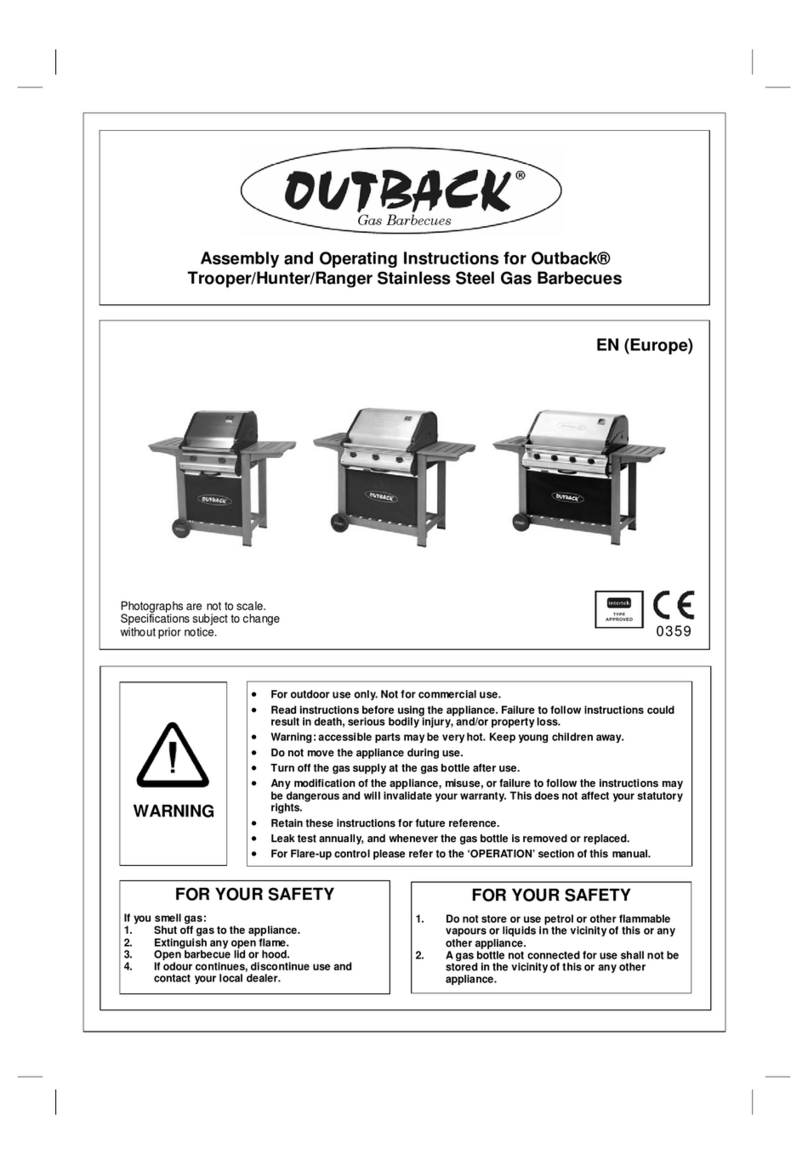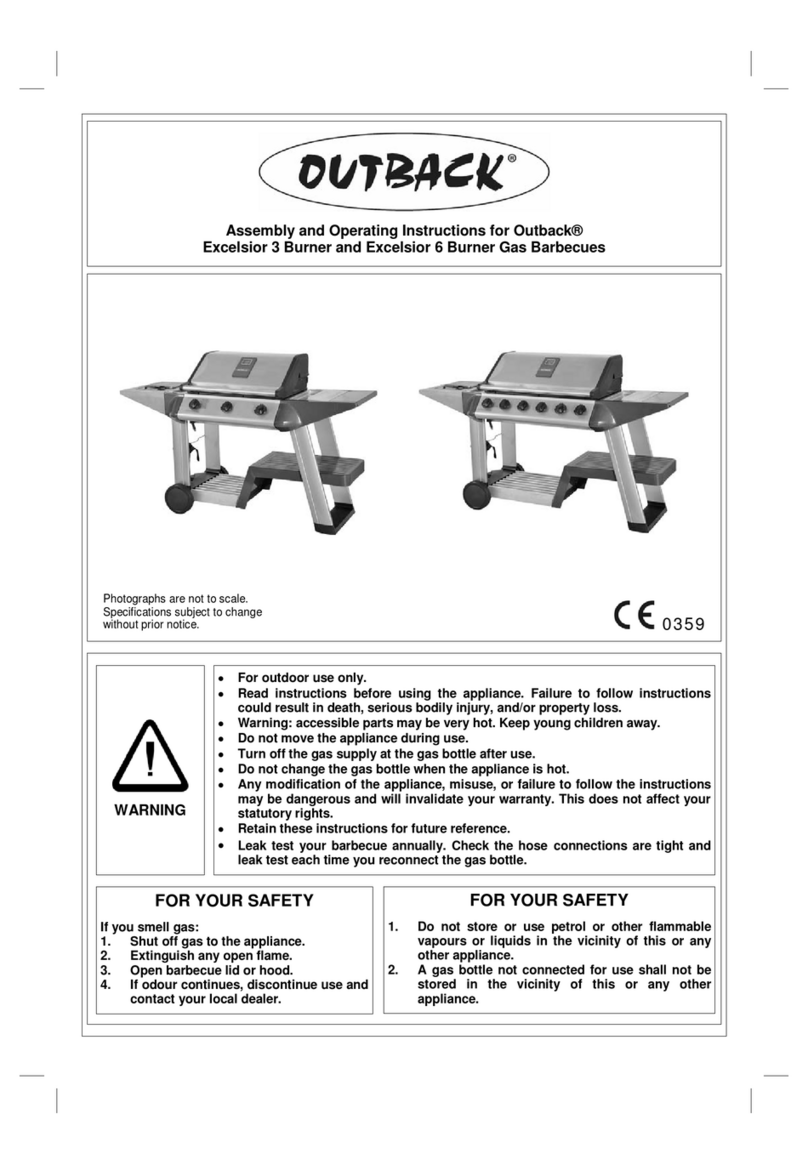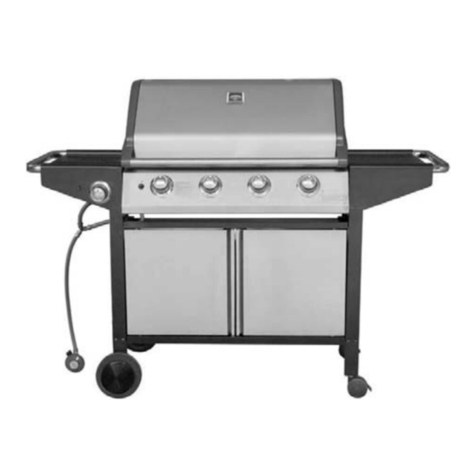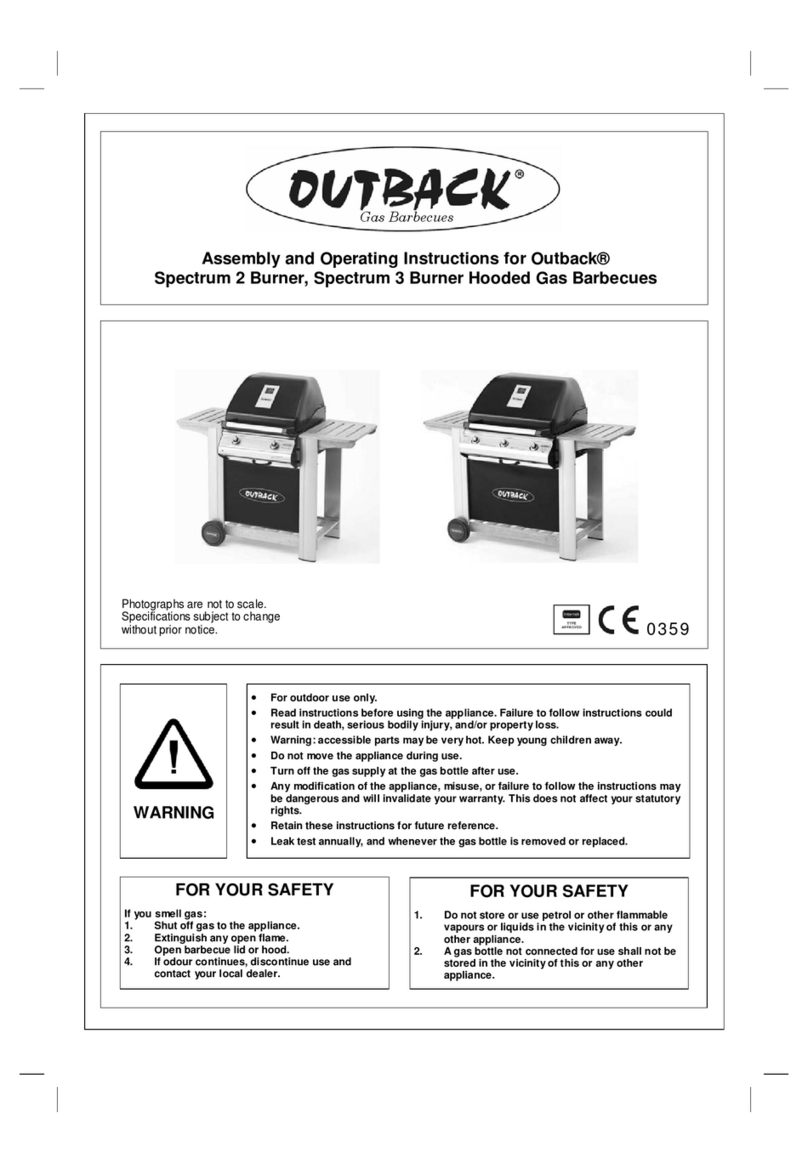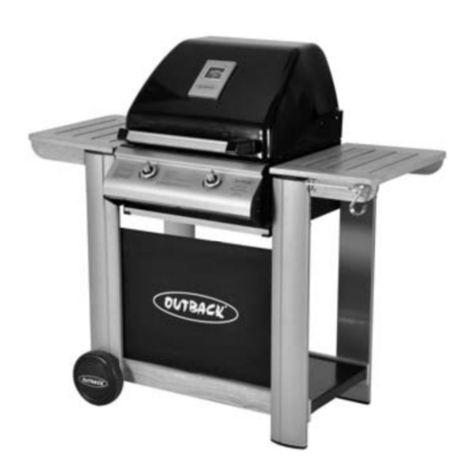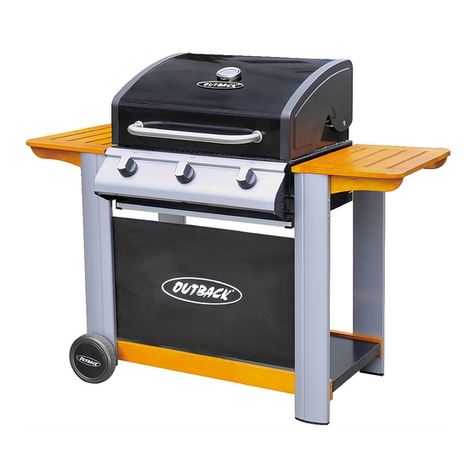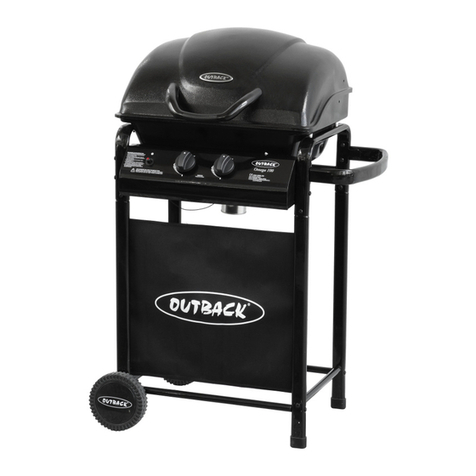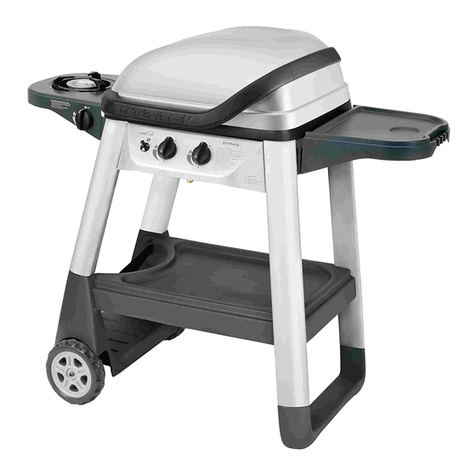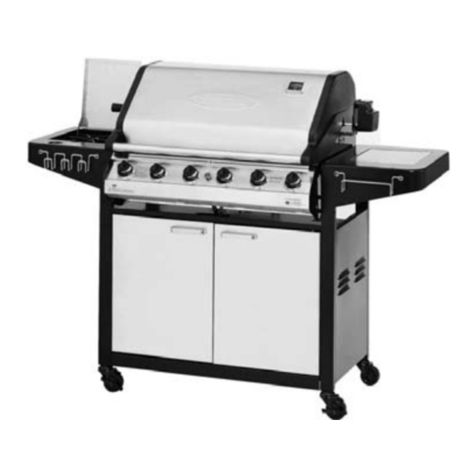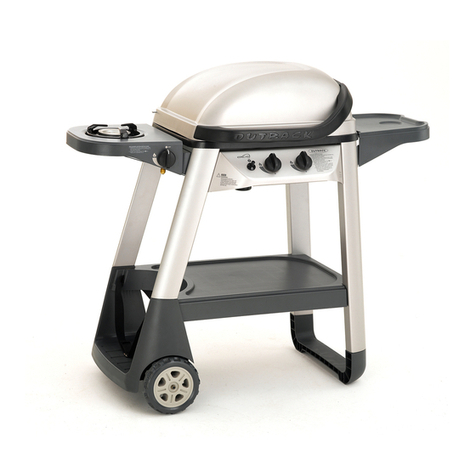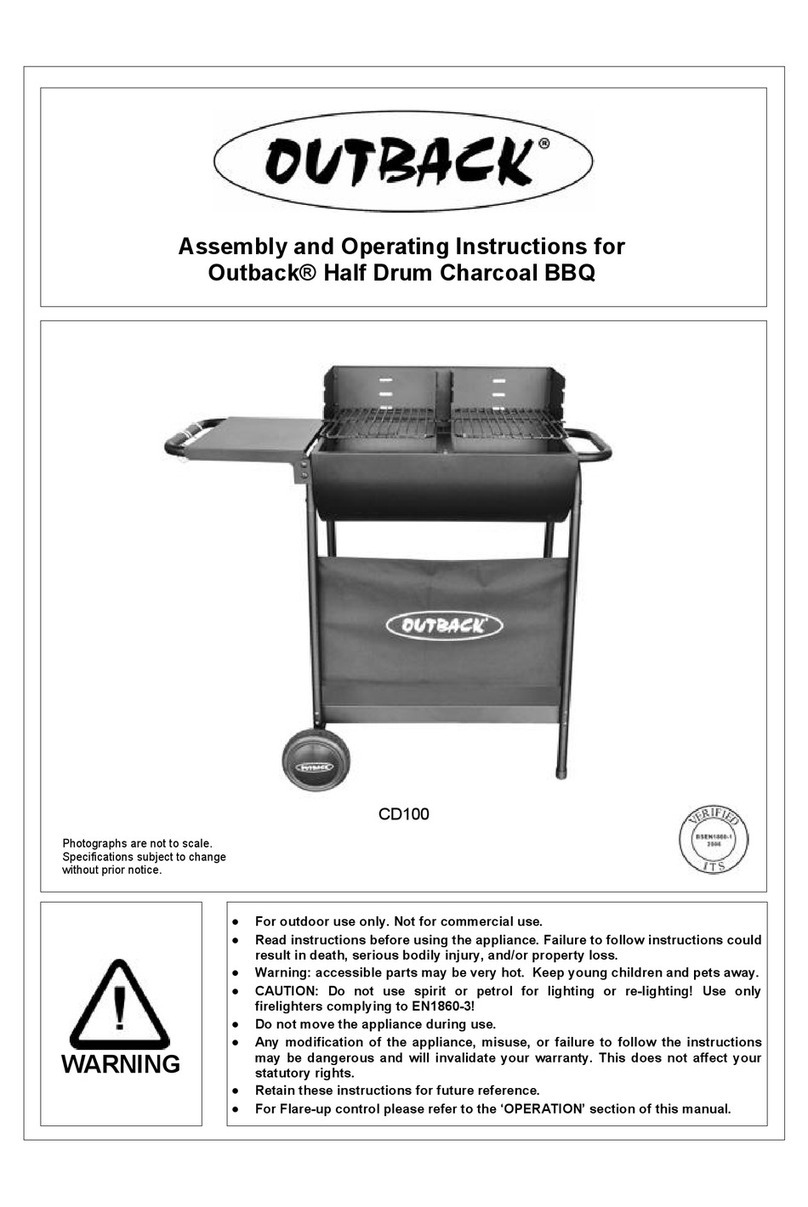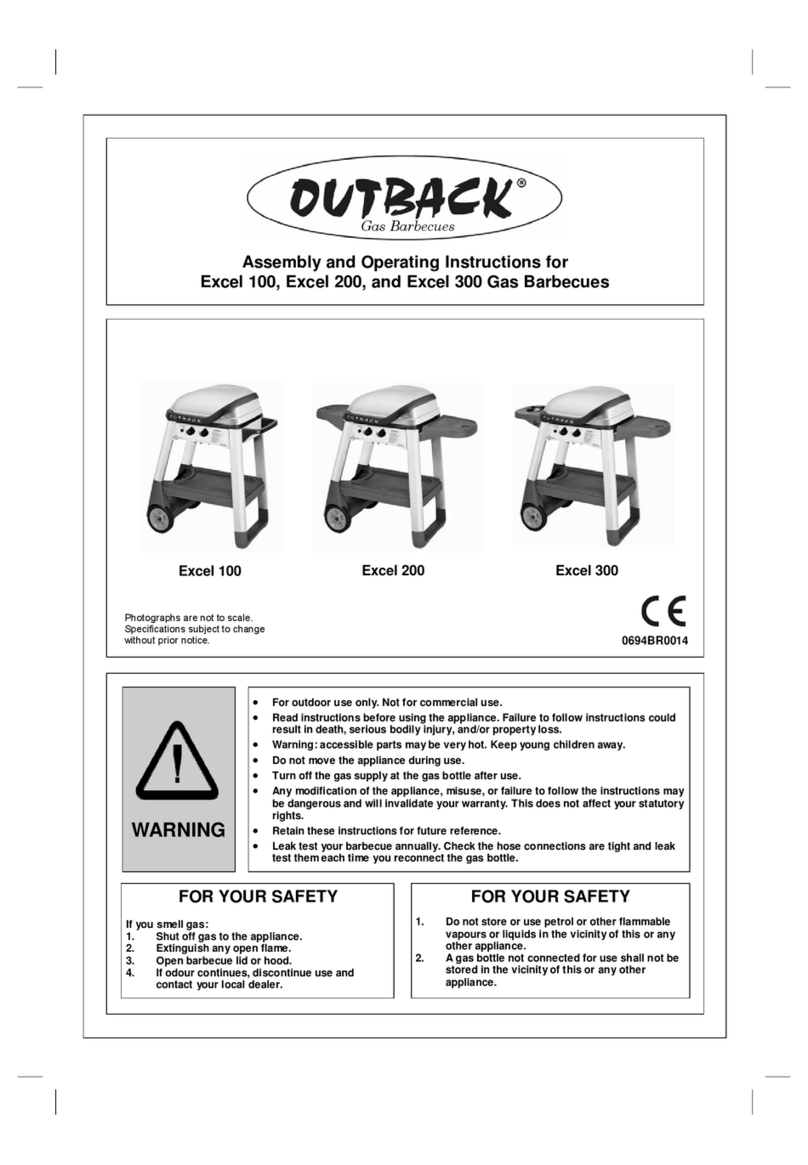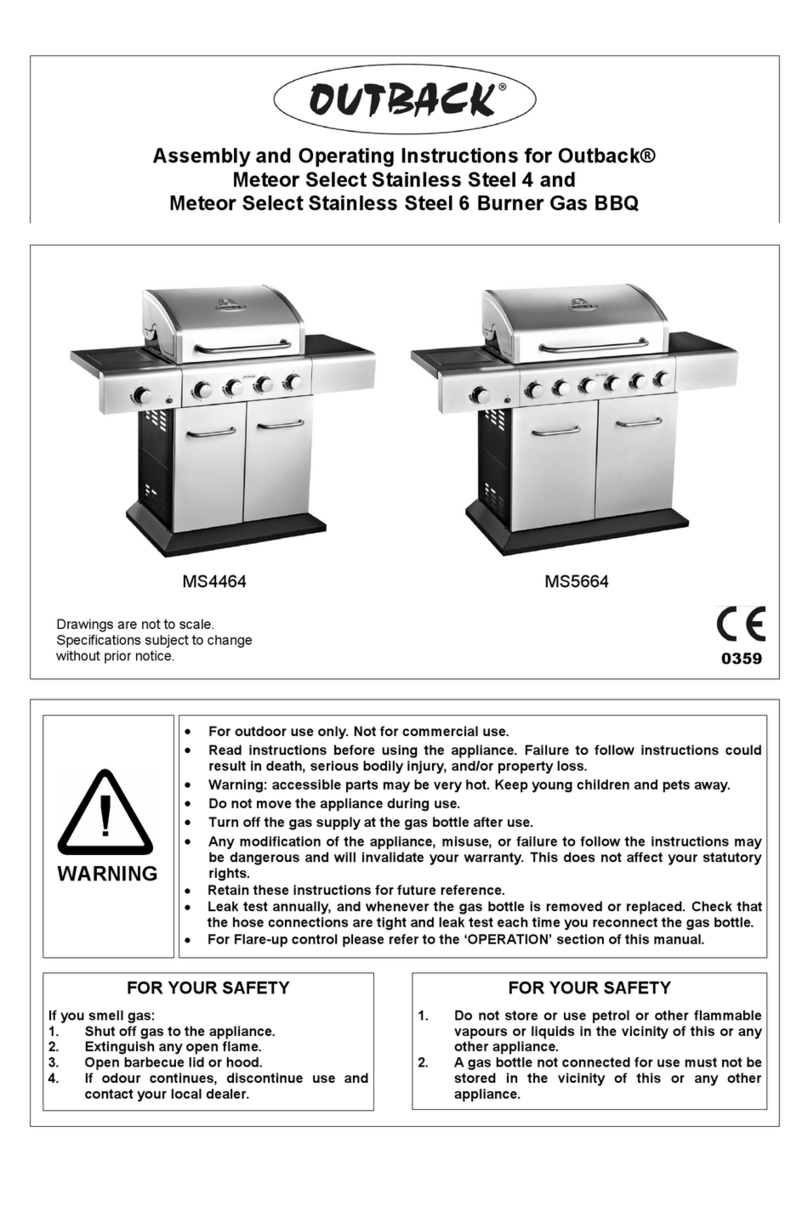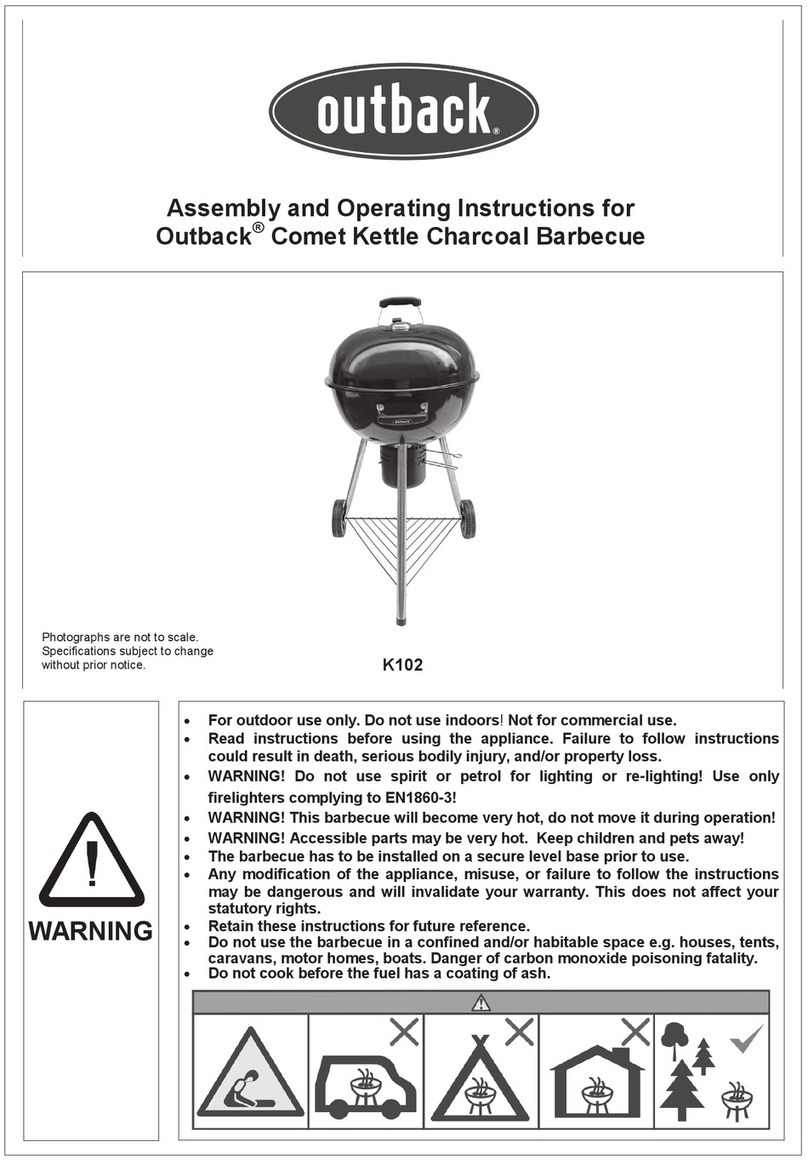10
Model Butane Minimum
Bottle Size Propane Minimum
Bottle Size
Outback®
Trooper 15kg 6kg
Outback®
Hunter 15kg** 10kg
E. Important Information
Please read these instructions carefully before
assembly and use.
nRetain these instructions for future reference.
nFor outdoors use only – do not use indoors. Do
not use below ground level.
nFor use with LPG bottled gas only. A fixed
pressure regulator of 28-30mbar must be used
for butane or 37mbar for propane. The use of
an adjustable regulator is dangerous and must
never be used with this barbeque.
nLPG bottles should not be stored indoors.
nRemove plastic wrap from any part before
lighting.
nDo not use within 1m of any flammable
structure or surface.
nLP gas cylinders should not be placed directly
underneath the barbecue.
nLP gas cylinders must not be stored or used in
the horizontal position. A leak would be very
serious and liquid could enter the gas line.
nOpen the barbecue lid before lighting. The
barbecue should never be lit or used while the
lid is closed.
nDo not move the barbecue while alight.
nThis barbecue must not be left unattended
when lit.
nParts of this barbecue become very hot – care
must be taken when children, elderly people,
and animals are present.
nAlways turn off the gas bottle when the
barbecue is not in use.
nNever cover a barbecue until it has completely
cooled.
nLeak test the barbecue annually. Check that
the hose connection to the barbecue is tight
and leak test whenever the gas bottle is
reconnected.
nDo not store flammable materials near this
barbecue.
nDo not use aerosols near this barbecue.
nFailure to follow the manual’s instructions
could result in serious injury or damage.
nIf you have any queries regarding these
instructions, contact your local dealer.
F. Gas and Regulator
This barbecue, hose, (and regulator, if included),
are approved for use in the UK. The barbecue is
also approved for use in other countries as listed
on the control panel and in the Technical
Specifications included in the barbecue manual. If
the barbecue is intended to be used outside of the
UK, the consumer MUST seek advice from the
local qualified gas supplier as to the suitability of
the barbecue and with regards to the correct hose
and regulator that they should be using.
This barbecue can use either propane or butane
LPG bottled gas. Propane bottles, normally red
coloured, will supply gas all year round, even on
cold winter days. A spanner may be required to
change gas bottles. Butane bottles, normally blue,
will supply sufficient gas in summer, but
performance of the barbecue may be affected
once the gas temperature starts to fall below +10°
C. The bottle should never be stood on the trolley
base and placed directly under the barbecue. Gas
bottles should never be stored or used laid on their
side. Never store gas bottles indoors.
For optimal performance, we suggest the
following:
** Can be used but the maximum heat output will
be restricted
Suitable regulators for butane must have an outlet
pressure of 28-30mbar. For propane, the regulator
must have an outlet pressure of 37mbar. YOU
MUST HAVE THE PROPER REGULATOR AND
BOTTLE IN ORDER FOR THE BARBECUE TO
OPERATE SAFELY AND EFFICIENTLY. USE OF
AN INCORRECT OR FAULTY REGULATOR IS
DANGEROUS AND WILL INVALIDATE ANY
WARRANTY. Please consult your local gas dealer
for the most suitable gas bottles and regulators.
G. Installation
G1. Selecting a Location
This barbecue is for outdoor use only and should
be placed in a well-ventilated area. Take care to
ensure that it is not placed UNDER any
combustible surface. The sides of the barbecue
should NEVER be closer than 1 metre from any
combustible surface. Keep this barbecue away
from any flammable materials!
G2. Precautions
Do not obstruct any ventilation openings in the
barbecue body. Position the gas supply bottle on
